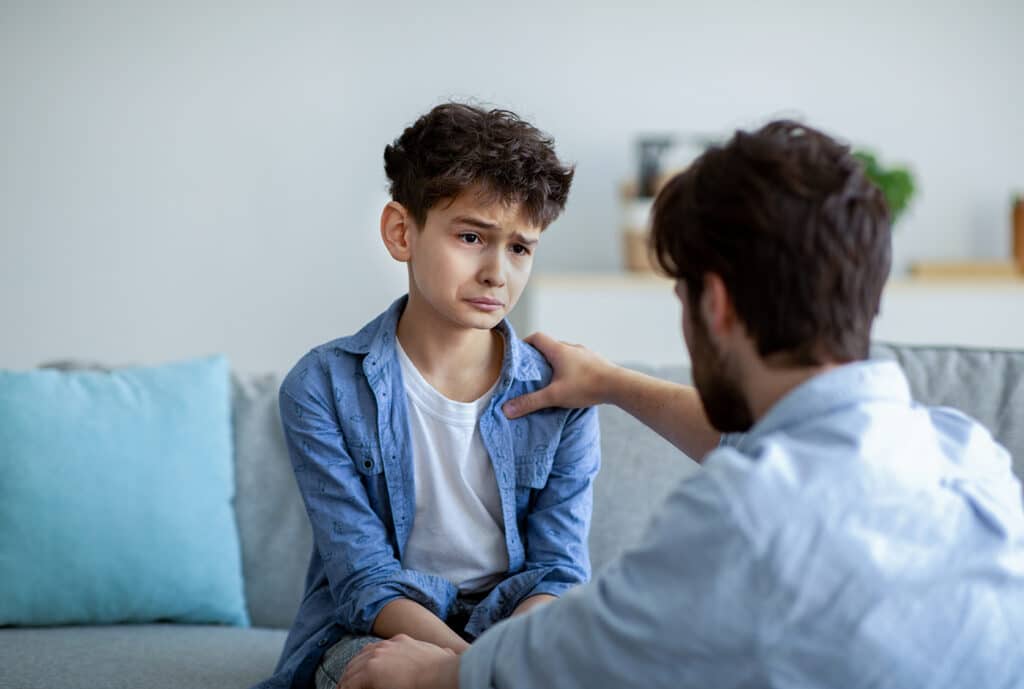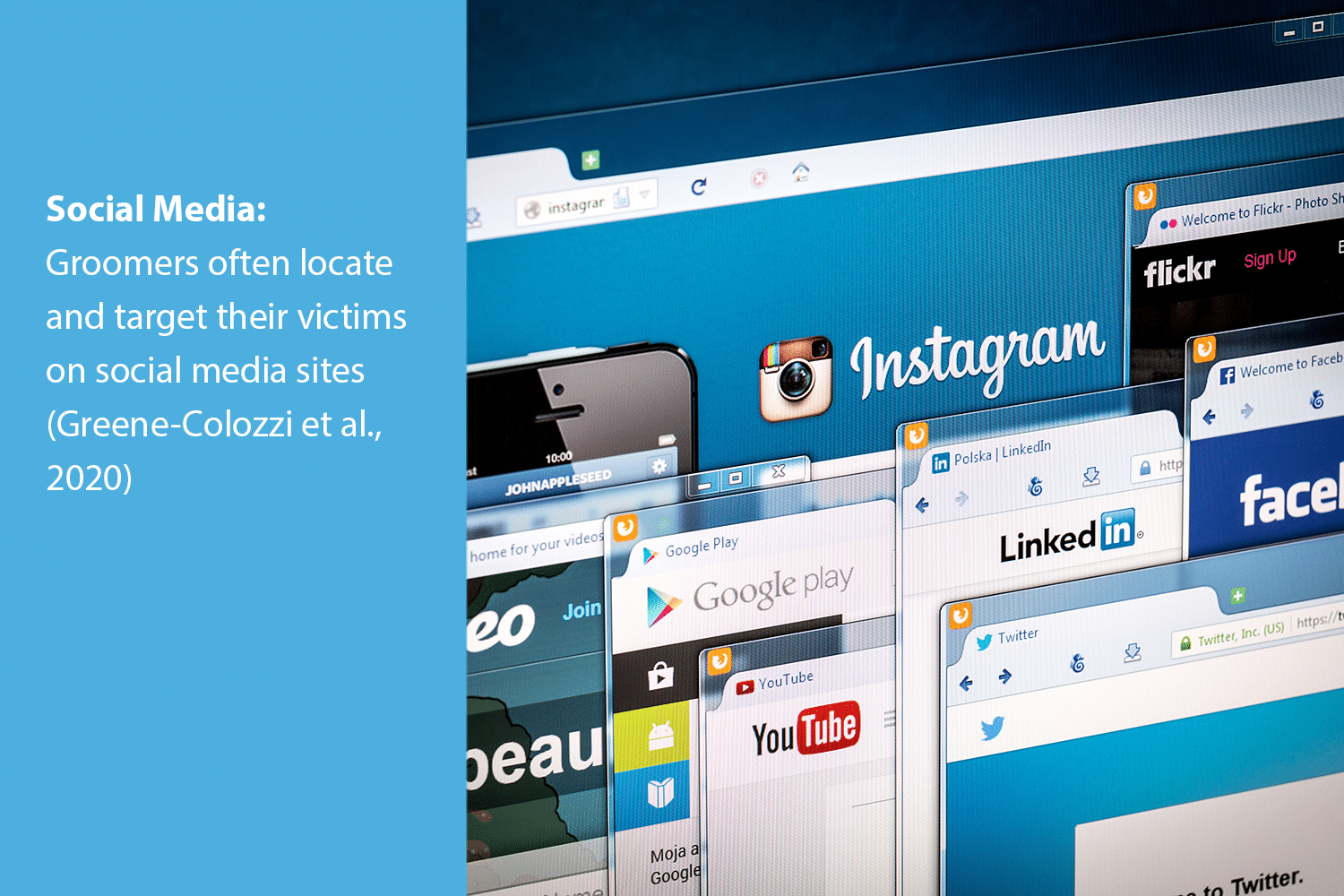We can best protect the children in our care in two ways: educating ourselves and intentionally teaching our kids how to recognize a predator.
Is Online Grooming Common?
Rates of communicating with children to abduct or sexually exploit them are rising. Disturbingly, reports increased 97.5% between 2019 and 2020 alone.
Kids are unlikely to recognize online danger. Over 50% of children could not tell the difference between internet users their age and adults with sexual motives. [a]
When tested on their ability to differentiate between peers and adults with sexual intentions in online interactions, more than half [of children] overestimated their ability to detect risk as only 43% made accurate assessments.
—Dr. Ethel Quayle, University of Edinburgh, Personal Chair of Forensic Clinical Psychology
You can read more about identifying the signs of online grooming in our blog—Signs of Grooming.
When we know how to recognize the signs of grooming, we can better protect the young people in our care and empower children to protect themselves.
1 in 5 youth have seen sexually explicit content online, and 1 in 9 have been sexually harassed online in the past. [b]
Where Does Online Grooming Happen?
For our kids to be protected, we need to be aware of the most frequent places where grooming occurs online.
Children are most vulnerable in chat rooms, on social media, and gaming platforms.
Predators hunt for prey and initiate contact, communicating with messages, video chat, and real-time audio.
1 out of 12 children is sexually victimized. [c]
Which Behaviors Put Kids at Risk for Online Grooming?
When it comes to staying safe, certain behaviors may increase the chances of our kids being groomed.
Use the checklist below to discuss how to be safe online and gauge whether a child’s behavior could be putting them at risk.
Keep in mind that this list may not be comprehensive as predators are always looking for new ways to exploit and harm children.
Kids who engage in 4 of the following behaviors are 11 times more likely to receive sexual solicitations online. [d]
NOTE: It will be really difficult for a child to disclose that they are chatting with a stranger. Lapses in judgment are part of growing up, and it’s important for us to hold a safe space for kids to come to us when they are in trouble.
If a child discloses that they have made contact with a threatening stranger, they need to know that it is never their fault.
Behaviors That May Put Kids at Risk
What Kids Should Know if They Have Been Groomed

- It is never too late to get help. No matter how far things have escalated, there are adults who will support you and help you get out of the situation. [e]
- Even if you feel you have made some poor judgment calls, it is not your fault that you have received sexual solicitations from an adult. Their actions are inexcusable, even if you began the chat. [f]
- If anyone does anything that makes you uncomfortable, put your device face down and tell an adult. [g]
- Don’t delete any messages you receive. These can be used as evidence when reporting the perpetrator. [h]
Help for Parents and Caregivers

- Provide kids with a safe, first phone to help them learn Tech in Steps™ and prepare them for exposure to dangerous people.
- It will be difficult, but try to keep your reaction in check. Try not to panic. Recognize the courage it took for your child to come to you. Support them and let them know they made the right choice to tell you. [j]
- Report the perpetrator to the platform your child was using. Block the perpetrator.
- Gather evidence by saving conversations and screenshots in a folder to share with the police. If the perpetrator is left unchecked, they will harm other children. [k]
- Don’t delete any messages your child receives. This can be used as evidence in reporting the perpetrator. [m]
- Follow up with your child about how they are feeling. At your discretion, connect them with a mental health professional for support. Children may be experiencing feelings of loss, shame, and betrayal. [n]
Additional Resources

- Stay up to date using Common Sense Media’s website for media and digital content reviews for all ages.
- For more information on how to respond if a child tells you they have been groomed or sexually abused, visit the Rape, Abuse & Incest National Network website.
- Learn more about how you can help protect your kids from online predators.
Share this article with family and friends
References
- Anderson, M. (2022, March 11). Utah expert says child predators can get to kids with VR headsets. KSL TV5. Retrieved March 14, 2022, from https://ksltv.com/486643/utah-expert-says-child-predators-can-get-to-kids-with-vr-headsets/
- Bowles, N. & Keller, M. H. (2019, Dec. 7). Video games and online chats are ‘hunting grounds’ for sexual predators. The New York Times.
- Cardei, C., & Rebedea, T. (2017). Detecting sexual predators in chats using behavioral features and imbalanced learning. Natural Language Engineering, 23(4), 589–616
- Chiu J. & Quayle, E. (2022). Understanding online grooming: An interpretative phenomenological analysis of adolescents' offline meetings with adult perpetrators. Child Abuse & Neglect, 128
- Elersma, C. (2017). The facts about online predators every parent should know. Common Sense Media. Retrieved April 14, 2022, from https://www.commonsensemedia.org/articles/the-facts-about-online-predators-every-parent-should-know
- Greene-Colozzi, E. A., Winters, G. M., Blaskoc, B., & Jeglica, E. L. (2020). Experiences and perceptions of online sexual solicitation and grooming of minors: A retrospective report. Journal of Child Sexual Abuse, 29(7), 836-854
- Internet Matters. (n.d.). Deal with it. https://www.internetmatters.org/issues/online-grooming/deal-with-it/
- Madigan, S., Villani, V., Azzopardi, C., Laut, D., Smith, T., Temple, J. R., Browne, D., & Dimitropoulos, G. (2018). The prevalence of unwanted online sexual exposure and solicitation among youth: A meta-analysis. Journal of Adolescent Health 63(2), 133-141
- Online Grooming. (n.d.). Childline. Retrieved April 14, 2022, from https://www.childline.org.uk/info-advice/bullying-abuse-safety/online-mobile-safety/online-grooming/
- RAINN. (n.d.) How to support a loved one. Retrieved April 14, 2022, from https://www.rainn.org/TALK
- Wolak, J., Evans, L., Nguyen, S., & Hines, D. A. (2013). Online predators: Myth versus reality. New England Journal of Public Policy, 25(1), https://scholarworks.umb.edu/cgi/viewcontent.cgi?article=1646&=&context=nejpp&=&sei-redir=1&referer=https%253A%252F%252Fscholar.google.com%252Fscholar%253Fhl%253Den%2526as_sdt%253D0%25252C45%2526q%253Dtypes%252Bof%252Bonline%252Bpredators%2526btnG%253D#search=%22types%20online%20predators%22












Success!
Your comment has been submitted for review! We will notify you when it has been approved and posted!
Thank you!